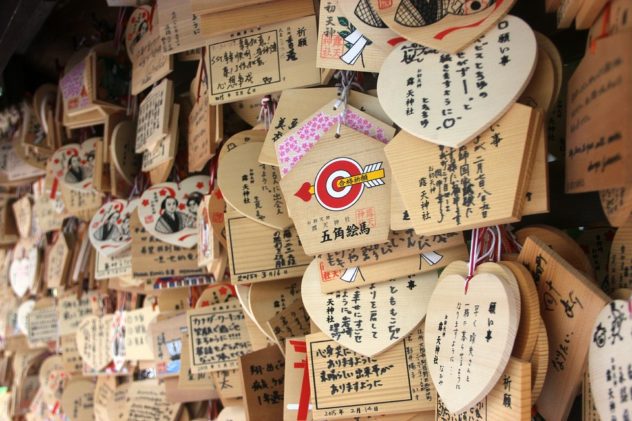Vocabulary:
- get (one’s) hands on /get (whuns) HANDS on/
- inscription /in-SKRIP-shuhn/
- ward off /WAWRD awf/
- omen /OH-muhn/
- on (one’s) person /on (wuhns) PUR-suhn/
- soiled /SOY-uhld/
[idiom] to acquire something, usually a physical object
It took me months to get my hands on this rare grandfather clock I saw in the antique store.
[noun] words that are written or cut on something
The inscriptions on the monument have worn away and can no longer be read.
[phrasal verb] to prevent someone or something unpleasant from harming or coming close to you
Many believed that the burial ritual was practiced to ward off evil spirits.
[noun] something that is considered to be a sign of how a future event will take place
The mist around the city seemed like a bad omen so Anna decided to stay inside her house.
[idiom] in a pocket, bag, or something else that you are holding
Felix always has an umbrella on his person regardless if it’s rainy or sunny.
[adjective] dirty
Maintain the bedroom’s cleanliness by replacing soiled sheets and pillow cases.
Omamori contains inscriptions on wood or paper that are said to grant good luck and protection to those who own them. In modern Japan, they are recognized as ideal souvenirs that are bought in temples and shrines. Let’s take a look at some types and examples of omamori:
Most common examples of omamori:
Katsumori – for general success or achieving your goals
Yakuyoke – for warding off misfortune and ill omens
Kenko – wishing for good health in general
More specific types of omamori:
Kanai-anzen – for the safety and welfare of one’s family
Shobai-hanjo – for business, career, and financial growth or success
Byoki-heyu – for wishing someone who’s ill to recover from their sickness
Although there are others that people can choose from, all omamori share similar important rules that must be followed. The most crucial rule is to keep them as is and never attempt to open them. Doing so would cause the blessings to depart, thus making the omamori useless. Another is keeping them on your person or held onto what they need to protect. If the omamori is old, damaged, or soiled, they must be brought back to the temple where they are purchased for proper disposal.
We have different needs and hopes every new year, and a little touch of extra luck can make a huge difference. For this year, which omamori have you set your heart on?
Comprehension Questions:
- According to the article, what is the most important rule if you have an omamori?
- Why is it not allowed to open an omamori?
- What does an omamori contain?
- Based on the article, what should people do if their omamori becomes dirty and worn-out?
- In the article, what omamori grants financial success to its owner?
Discussion Questions:
- What can you say about the rules all omamori share? Please explain your answer.
- What other types of omamori are you familiar with and what do they represent? Kindly enumerate.
- How popular do you think omamori are to both locals and tourists?
- If you were given the chance, what kind of omamori do you wish to have for this year and why?
- Aside from omamori, please share other types of lucky charms that Japan has.
